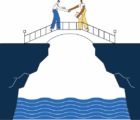Ethical Issues is written by members of the CAS Committee on Professionalism Education (COPE). The column’s intent is to stimulate discussion among CAS members. Therefore, positions are sometimes stated in such a way as to provoke reactions and thoughtful responses on the part of the reader. The opinions expressed by readers and authors are for discussion purposes only and should not be used to prejudge the disposition of any actual case or modify published professional standards as they may apply in real-life situations.
Vermont Accident Mutual Protection (VAMP) is a mid-sized regional insurer that writes $900 million of personal auto premium and $400 million of homeowners premium. They write an additional $100 million of rental property, tenant and business owners insurance.
The chief pricing actuary is Bela, who has been with VAMP for seven years and was recently promoted to chief actuary. Since none of VAMP’s three other pricing actuaries (including a newly minted ACAS) had the required experience to be promoted to chief pricing actuary, they hired Boris, an FCAS with 10 years of pricing experience.
Boris is excited to start. He knows he has the pricing experience, but he has never been in charge of a pricing unit before, much less been a chief pricing actuary.
Bela calls Boris into his office shortly after Boris’s onboarding. “Boris, the homeowners book has been performing poorly over the last two years,” Bela says. “I think the unfavorable results are being driven by poor customer retention and adverse selection. The CEO is livid! She wants to turn the book around or heads will roll!”
“Wow! It looks like I stepped into the fire in my first week,” Boris responds. “The issue could be with claims settlements or customer service, or the pricing could be too high compared to the competition. I will take a look at the pricing. When was the last review performed?”
Bela checks on his computer. “There hasn’t been a pricing review in four years. That looks like a good place to start. Let me know what you find out.”
Boris tasks the pricing staff with calculating a homeowners indication for each state by territory. Boris reviews the results and notices that the statewide indications range from +3% to +17% with many territory indications in the +25% to +30% range. Only a handful of territories have negative indications.
Boris goes back to Bela to tell him the news. “Well, the poor results are likely due to inadequate pricing, but that doesn’t explain the bad retention rate.”
Bela is shocked. “Wow! That is not good news. If we raise prices, we will lose even more business, especially if we raise them by the indicated amounts. The insurance departments won’t like the size of the increases either.” Bela thinks to himself, “I’m going to get blamed for not catching these inadequacies while I was the chief pricing actuary. I could even get fired!”
“OK. Let’s propose no change in rates and make some increases in the worst territories. We can offset the increases by increasing credits for higher deductibles and decreasing the increased limits factors (ILFs) for higher limits,” Bela offers. “That way we are only increasing rates on our worst customers.”
Boris is shocked this time. “But we have no support for changing deductible factors or ILFs, and our rate indications do not support a 0% rate change proposal.”
“Just do it,” says Bela. “You can just change development factor selections and trend assumptions to get the indicated range to include no change. The low end of your range is +3%, so it shouldn’t take much to get that down to +0%. We can blame the retention issues on underwriting and customer service. Then we can slowly move to more adequate rates over the next few rate changes. That will deflect the attention away from us.” Bela adds, “Sometimes being the chief pricing actuary means making tough decisions to keep management happy.”
Boris is uncomfortable doing what Bela asks, but he doesn’t want to get fired from his first leadership position because he is unwilling to play the political game.
What is Boris to do? Should Boris tell Bela that these actions are unethical? Tell Bela that he won’t do them? Contact the Actuarial Board for Counseling and Discipline? Should Boris make the requested adjustments to the analysis, while providing supporting documentation behind the changes?
Yes
Precept 1 of the CAS Code of Conduct states: “An Actuary shall act honestly, with integrity and competence, and in a manner to fulfill the profession’s responsibility to the public and to uphold the reputation of the actuarial profession.” Annotation 1-4 goes on to state: “An Actuary shall not engage in any professional conduct involving dishonesty, fraud, deceit, or misrepresentation or commit any act that reflects adversely on the actuarial profession.”
Bela is pushing blame onto others to avoid taking the blame himself. This does not improve the reputation of the actuarial profession and is dishonest.
Precept 13 states: “An Actuary with knowledge of an apparent, unresolved, material violation of the Code by another Actuary should consider discussing the situation with the other Actuary and attempt to resolve the apparent violation. If such discussion is not attempted or is not successful, the Actuary shall disclose such violation to the appropriate counseling and discipline body of the profession, except where the disclosure would be contrary to Law or would divulge Confidential Information.”
The revised indication is within reasonable limits, but Bela’s instruction to revise the indication to further his own interest qualifies as an apparent or material violation of the Code.
Actuarial Standards of Practice 53, section 3.5, Methods, Models and Assumptions states: “The actuary should use methods or models, along with reasonable assumptions, that, in the actuary’s professional judgment, have no known significant bias in the aggregate relative to the intended measure.”
The revised assumptions are reasonable, but Bela has introduced a known significant bias in the aggregate to arrive at the desired results.
No
According to the Statement of Principles Regarding Property and Casualty Insurance Ratemaking, “A rate is an estimate of the expected value of future costs.” It also states that consideration should be given to past and prospective changes in claim costs, claim frequencies, exposures, expenses and premiums when selecting trend. Finally, it states: “Informed actuarial judgments can be used effectively in ratemaking. Such judgments may be applied throughout the ratemaking process and should be documented and available for disclosure.”
Bela argues that ratemaking is not an absolute science and a wide range of indications can be considered reasonable. Bela is recommending a change in assumptions to revise the range of reasonable indications. Given that the current low end of the range is +3%, modest-but-reasonable changes in assumptions will likely yield a flat indication overall. Bela is not responsible if management decides that pricing is not the issue and places the blame on another department. There is nothing dishonest in that.











